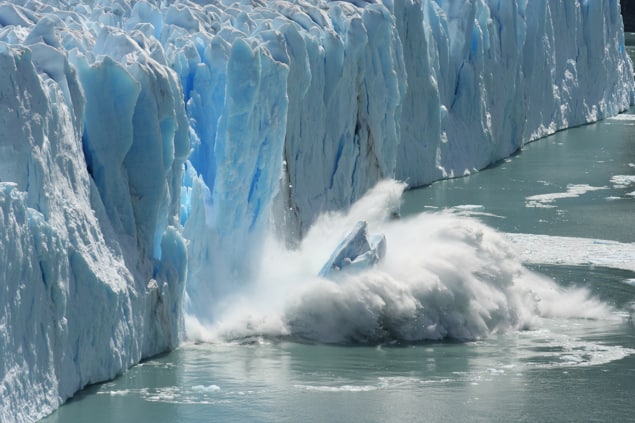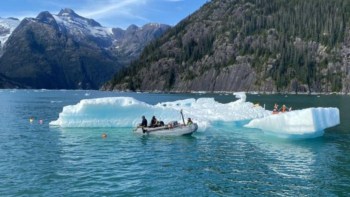
Many people are aware that glaciers are melting as climate warms. But a new threat may be emerging: cryoconite. These dark sediments on top of glaciers act like sponges that soak up and concentrate radioactive fallout from nuclear accidents and weapons testing. As glaciers retreat, the contaminants could move into lakes or the soil and then enter the food chain.
Scientists have found radioactive cryoconite at 17 glaciers worldwide, from the Arctic to Antarctica, as Caroline Clason of the University of Plymouth, UK, revealed at the European Geosciences Union (EGU) General Assembly in Vienna, Austria. Together with an international team, Clason measured radioactivity levels in cryoconite orders of magnitude higher than the general landscape. These sediments are a mix of inorganic material like minerals and organic material, including microbes; they accumulate radionuclides when they fall from the atmosphere in snow.
“Our samples are exceptional…outside a nuclear exclusion zone,” said Clason at a press conference, adding that people weren’t aware that glaciers may release radioactive materials from nuclear accidents some 30 years later. Although this may not be harmful at all, said the researcher, it’s something you can’t ignore and requires investigation.
At Isfall glacier in Arctic Sweden, cryoconite contained caesium-137 at an average of 3069 Bq per kg, the researchers found. The highest single value – 13558 Bq/kg — was at Switzerland’s Morteratsch glacier. For comparison, the legal limit for caesium-137 in meat for human consumption is 1500 Bq/kg.
Although scientists know that radionuclides become concentrated in cryoconite, they don’t know if that’s a route into the food chain. Clason and colleagues are studying how well water and acids break down cryoconite in order to reveal whether animal digestion systems can adsorb the radioactive material. If, for example, reindeer grazing in front of glaciers take up radionuclides, there could be harmful socioeconomic consequences for reindeer herders, Clason says.
On a more positive note, cryoconite could perhaps be used to clean up land contaminated by nuclear accidents, Clason believes. Lichens and mosses, which accumulate radionuclides too, have already been used in bioremediation.



